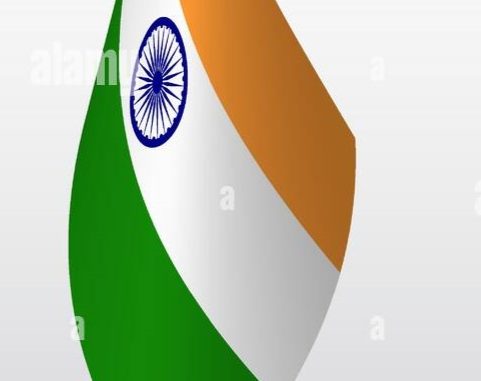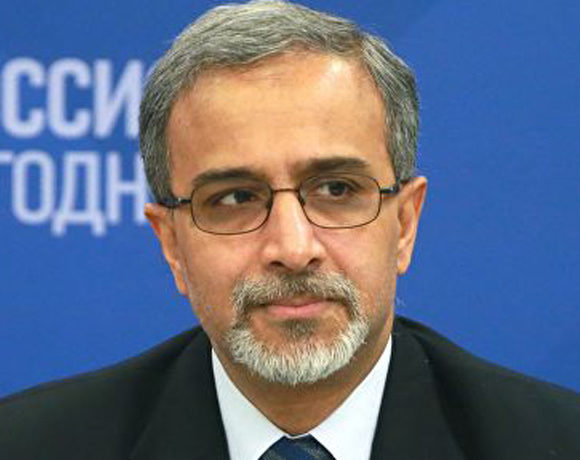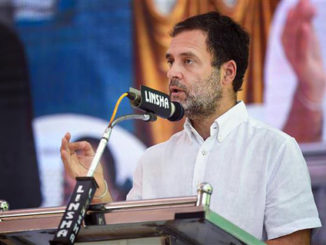
By D.B. Venkatesh Varma

Striking the right balance between continental and maritime security will enable India’s long-term security interests.
When Prime Minister Narendra Modi hosts the five Central Asia leaders at the Republic Day Parade on January 26, it will send a strong signal — of the new prominence of the Central Asian region in India’s security calculations. In 2015, Mr. Modi visited all the five Central Asian states. Recently, National Security Adviser Ajit Doval and External Affairs Minister S. Jaishankar also hosted their Central Asian counterparts in Delhi. The collapse of American military power in Afghanistan, the subsequent takeover of Kabul by the Taliban and the consequent rise in the influence of Pakistan and China are developments of high concern for India’s continental security interests.
While the Republic Day invitation is significant symbolically, in substance, however, hard work lies ahead. India’s continental strategy, in which the Central Asian region is an indispensable link, has progressed intermittently over the past two decades — promoting connectivity, incipient defense and security cooperation, enhancing India’s soft power and boosting trade and investment. It is laudable, but as is now apparent, it is insufficient to address the broader geopolitical challenges engulfing the region.
Focus on Eurasia: China’s assertive rise, the precipitous withdrawal of forces of the United States/North Atlantic Treaty Organization (NATO) from Afghanistan, the rise of Islamic fundamentalist forces, the changing dynamics of the historic stabilizing role of Russia (most recently in Kazakhstan) and related multilateral mechanisms — the Shanghai Cooperation Organization (SCO), the Collective Security Treaty Organization, and the Eurasian Economic Union — have all set the stage for a sharpening of the geopolitical competition on the Eurasian landmass. This competition is marked by a weaponization of resource and geographical access as a form of domination, practiced by China and other big powers. To meet this challenge, evolving an effective continental strategy for India will be a complex and long-term exercise.
Some course correction: India’s maritime vision and ambitions have grown dramatically during the past decade, symbolized by its National Maritime Strategy, the Security and Growth for All in the Region (SAGAR) initiative for the Indian Ocean Region and major initiatives relating to the Indo-Pacific and the Quad, in which maritime security figures prominently. This was perhaps an overdue correction to the historic neglect of India’s maritime power. It was also a response to the dramatic rise of China as a military power. It may also be a by-product of the oversized influence over our think-tank community of Anglo-Saxon strategic thinking, which has tended to emphasize the maritime dimensions of China’s military rise more than others.
The U.S. is a pre-eminent naval power, even more so in the Indo-Pacific region, and defines its strategic preferences in the light of its own strengths. That said, maritime security is important to keeping sea lanes open for trade, commerce and freedom of navigation, resisting Chinese territorial aggrandizement in the South China Sea and elsewhere, and helping littoral states resist Chinese bullying tactics in interstate relations. However, maritime security and associated dimensions of naval power are not sufficient instruments of statecraft as India seeks diplomatic and security constructs to strengthen deterrence against Chinese unilateral actions and the emergence of a unipolar Asia.
The Chinese willingness and capacity for military intervention and power projection are growing far beyond its immediate region. Its rise is not merely in the maritime domain. It is expanding on the Eurasian continent — its Belt and Road Initiative projects in Central Asia up to Central and Eastern Europe and the Caucasus, undercutting traditional Russian influence, its gaining access to energy and other natural resources, and its dependency-creating investments, cyber and digital penetration and expanding influence among political and economic elites across the continent. The American military footprint has shrunk dramatically on the core Eurasian landmass, though it has a substantial military presence on the continental peripheries. Bulwarks against Chinese maritime expansionist gains are relatively easier to build and its gains easier to reverse than the long-term strategic gains that China hopes to secure on continental Eurasia. Like Association of Southeast Asian Nations (ASEAN) centrality is key to the Indo-Pacific, centrality of the Central Asian states should be key for Eurasia.
Border, connectivity issues : India’s partition and the emergence over the past six decades of a persistent two-front threat from Pakistan and China set the stage for a tough continental dimension of our security. There is increased militarization of the borders with Pakistan and China, with the Ladakh sector now increasingly looking like it will see permanent deployment on the Siachen Glacier. India has been subject for over five decades to a land embargo by Pakistan that has few parallels in relations between two states that are technically not at war. Connectivity means nothing when access is denied through persistent neighboring state hostility contrary to the canons of international law.
Difficulties have arisen in operationalizing an alternative route — the International North-South Transport Corridor on account of the U.S.’s hostile attitude towards Iran. It may appear strange that while we join the U.S. and others in supporting the right of freedom of navigation in the maritime domain, we do not demand with the same force the right of India to conduct interstate trade, commerce, and transit along continental routes — be it through the lifting of Pakistan’s blockade on transit or the lifting of U.S. sanctions against transit through Iran into Eurasia. With the recent Afghan developments, India’s physical connectivity challenges with Eurasia have only become starker. The marginalization of India on the Eurasian continent in terms of connectivity must be reversed.
Where the U.S. stands : The ongoing U.S.-Russia confrontation relating to Ukraine, Russian opposition to future NATO expansion and the broader questions of European security including on the issue of new deployment of intermediate-range missiles, following the demise of the Intermediate-Range Nuclear Forces (INF) treaty will have profound consequences for Eurasian security. This comes against the background of an ongoing U.S. review of its global military commitments. While the U.S. had over 2,65,000 troops under its European command in 1992, it now has about 65,000. Even with the rise of China’s military power, over the past decade, the U.S. which had about 1,00,000 troops in the early 1990s under what is now called the Indo-Pacific Command, currently has about 90,000 troops mostly committed to the territorial defense of Japan and South Korea. The U.S. Central Command (CENTCOM) has undergone a major transformation during the last decade; it had about 1,70,000 troops a decade ago (related to the wars in Iraq and Afghanistan), but has less than 10,000 personnel now.
The bottom line is clear – the U.S. would be severely stretched if it wanted to simultaneously increase its force levels in Europe and the Indo-Pacific. Successive waves of post-Cold War NATO expansion only increased overall insecurity, with the potential to create for the U.S. the mother of all quagmires. A major conflict — if it erupts in Central Europe, pitting Russia, Ukraine and some European states — will stall any hopes of a substantial U.S. military pivot to the Indo-Pacific. Geopolitics may be fractured but always add up globally. Russia and China do not need to be alliance partners to allow for coordinated actions relating to Taiwan or Donbas, as such coordination would flow from the very logic of the strategic conundrum that the U.S. now finds itself in. In the same vein, European NATO powers dependent on the U.S. can do only so much for strengthening security in the Indo-Pacific. Their engagement with the Indo-Pacific is welcome but we should not only be cognizant of the limitations of geography, obvious gaps between strategic ambition and capacity but also the inherently different standpoints of how major maritime powers view critical questions of continental security. India is unique as no other peer country has the same severity of challenges on both the continental and maritime dimensions.
Be assertive about rights : Going forward, it is clear India will not have the luxury of choosing one over the other; we would need to acquire strategic vision and deploy the necessary resources to pursue our continental interests without ignoring our interests in the maritime domain. This will require a more assertive push for our continental rights — namely that of transit and access, working with our partners in Central Asia, with Iran and Russia (not that we have many other options), and a more proactive engagement with economic and security agendas ranging from the SCO, Eurasian Economic Union (EAEU) and the Collective Security Treaty Organization (CSTO). Stabilizing Afghanistan is a necessary but not a sufficient condition.
Striking the right balance between continental and maritime security would be the best guarantor of our long-term security interests. But this will not be easy as we would need to work with different partners on different agendas even while their geopolitical contradictions play out in the open. India will need to define its own parameters of continental and maritime security consistent with its own interests. In doing so, at a time of major geopolitical change, maintaining our capacity for independent thought and action (namely strategic autonomy) will help our diplomacy and statecraft navigate the difficult landscape and the choppy waters that lie ahead.
(Author is a former Ambassador to Russia)





Be the first to comment